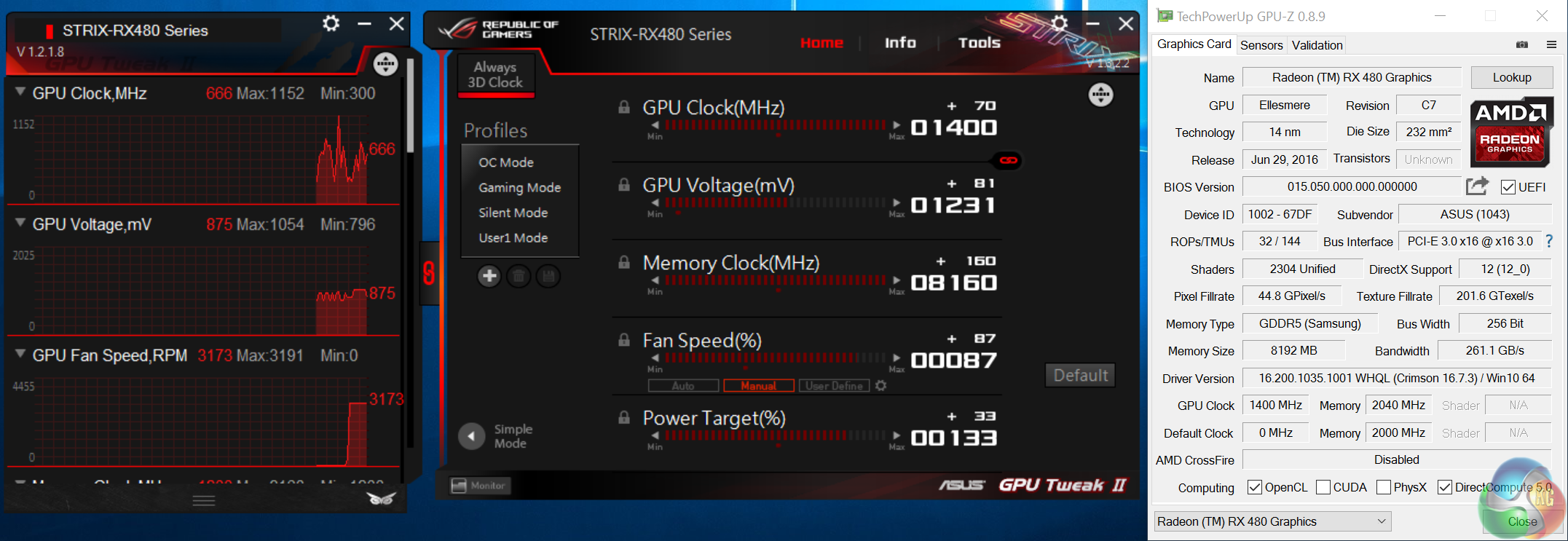So looks like the Asus GPU Tweak utility allows for 480 cards to go above the 1.15V default limitation.
KitGuru using that utility with the Asus 480 managed to reach 1.23V at 1400MHz, using Wattman they could only reach 1380MHz and I wonder if that meant the 1.15V limit.

Downside, notice the fan speed at 87%, maybe could be a bit lower as they are not showing temps, but most reports mentioning manual OC all talk about needing high fan RPM.
This manual OC put it above the Asus Stix 980, but then that too could be manual OC and would be back on top; caveat is the comparison was only with 3DMark.
Shame they did not show the core voltage when trying to use Wattman, but good news is the GPU Tweak utility does allow for above 1.15V, although not sure if it works universally for all 480 manufacturer/models (needs to be balanced against the possibility some AIB partners implemented cheaper PWM controller and VRMs in some of their more basic models).

http://www.kitguru.net/components/g...us-rx-480-strix-gaming-oc-aura-rgb-8192mb/30/
Maybe some with other 480s will try the Asus GPU Tweak utility.
Cheers
KitGuru using that utility with the Asus 480 managed to reach 1.23V at 1400MHz, using Wattman they could only reach 1380MHz and I wonder if that meant the 1.15V limit.

Downside, notice the fan speed at 87%, maybe could be a bit lower as they are not showing temps, but most reports mentioning manual OC all talk about needing high fan RPM.
This manual OC put it above the Asus Stix 980, but then that too could be manual OC and would be back on top; caveat is the comparison was only with 3DMark.
Shame they did not show the core voltage when trying to use Wattman, but good news is the GPU Tweak utility does allow for above 1.15V, although not sure if it works universally for all 480 manufacturer/models (needs to be balanced against the possibility some AIB partners implemented cheaper PWM controller and VRMs in some of their more basic models).

http://www.kitguru.net/components/g...us-rx-480-strix-gaming-oc-aura-rgb-8192mb/30/
Maybe some with other 480s will try the Asus GPU Tweak utility.
Cheers

